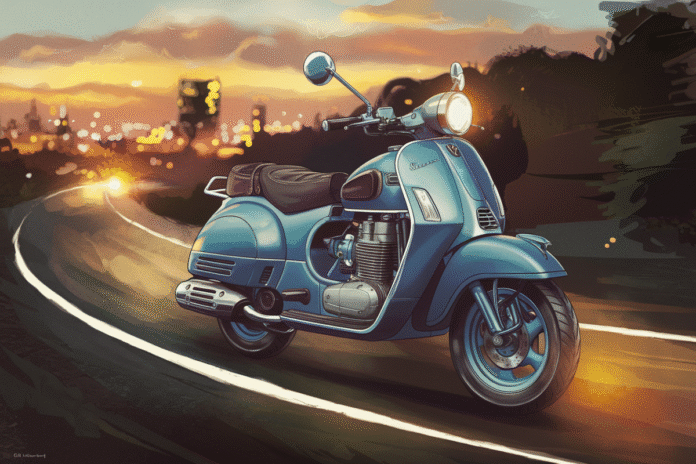“Is the motorcycle world ready for a scooter-inspired cruiser?” The question looms as manufacturers explore innovative designs to capture a broader audience. Amid rising fuel prices and a push for eco-friendliness, the demand for versatile and efficient vehicles has surged. The challenge lies in merging the allure of traditional cruisers with the practicality of scooters. This juxtaposition raises critical questions about performance, comfort, and rider experience. Can a vehicle embody the best of both worlds while appealing to diverse riders?
As urban landscapes evolve and commuting patterns shift, the motorcycle industry is at a crossroads. Riders increasingly seek convenience without sacrificing style or performance. The introduction of a cruiser that mimics the gas-and-go ease of a scooter presents both opportunities and challenges. Will this innovative approach resonate with consumers, or will it be dismissed as a novelty? The stakes are high, and the outcome could redefine how enthusiasts perceive cruising and commuting on two wheels.
The Concept of a Cruiser-scooter Hybrid
The idea of blending a cruiser with the convenience of a scooter is not merely a marketing gimmick; it represents a significant shift in consumer preferences. Riders today prioritize practicality, especially in urban settings where traffic congestion and parking constraints are common. A cruiser that offers the ease of a scooter could attract a new demographic of riders who may have previously overlooked traditional motorcycles. This hybrid design aims to provide a comfortable ride with a user-friendly experience, appealing to both novice and experienced riders alike.
For instance, the integration of automatic transmission, lightweight materials, and enhanced fuel efficiency can make this hybrid model more accessible. Imagine a vehicle that combines the iconic styling of a cruiser with the nimbleness of a scooter, allowing riders to navigate city streets effortlessly. Moreover, modern technology can enhance safety features, such as anti-lock braking systems and advanced traction control, making it an appealing option for safety-conscious consumers.
However, the success of this concept hinges on execution. Balancing aesthetics with functionality is crucial. If the design leans too heavily toward scooter-like features, it may alienate traditional cruiser enthusiasts. Conversely, if it fails to deliver the performance expected from a cruiser, it risks disappointing potential buyers. Striking the right balance will be essential for this innovative vehicle to thrive in a competitive market.
Market Potential and Consumer Reception
The potential market for a cruiser-scooter hybrid is substantial, particularly among urban dwellers and younger riders. As cities become increasingly congested, the allure of a compact, fuel-efficient vehicle grows. Surveys indicate that millennials and Gen Z consumers are more inclined to seek alternative transportation methods that align with their values of sustainability and convenience. A cruiser that embodies these qualities could tap into this lucrative demographic.
Moreover, the rise of ride-sharing services and electric scooters has changed the landscape of personal transportation. Consumers are becoming accustomed to the idea of using smaller, more efficient vehicles for short commutes. By offering a hybrid model that combines the best attributes of both cruisers and scooters, manufacturers can position themselves as pioneers in a rapidly evolving market. This innovative approach could attract attention at trade shows and motorcycle expos, generating buzz and excitement among potential buyers.
However, consumer reception will ultimately determine the success of this concept. Feedback from test rides and early adopters will be invaluable in refining the design and features. Engaging with the riding community through social media and events can help gauge interest and gather insights that inform future iterations. The ability to adapt based on consumer feedback will be crucial in establishing a loyal customer base.
Challenges and Considerations for Manufacturers
<pDespite the promising potential of a cruiser-scooter hybrid, manufacturers face several challenges that could impact its success. One significant hurdle is the existing competition in the motorcycle and scooter markets. Established brands have loyal followings, and breaking into this space requires strategic marketing and differentiation. Manufacturers must clearly communicate the unique benefits of their hybrid model to entice riders who are accustomed to traditional options.
Additionally, regulatory considerations play a vital role in the development of new vehicles. Compliance with safety and emissions standards is paramount, particularly as governments push for greener transportation solutions. Navigating the complexities of these regulations can be daunting for manufacturers, especially when introducing an innovative concept. Ensuring that the hybrid model meets all necessary criteria while maintaining performance and appeal will be a delicate balancing act.
Furthermore, pricing strategies will be critical in determining the vehicle’s market viability. Striking a balance between affordability and quality will be essential to attract a diverse range of consumers. If priced too high, the hybrid may deter potential buyers who are seeking budget-friendly options. Conversely, pricing it too low could undermine perceived value and quality. Manufacturers must carefully analyze market trends and consumer expectations to establish a competitive yet profitable price point.
Shaping the Future of Two-wheeled Transportation
The emergence of a cruiser with the gas-and-go convenience of a scooter could signify a transformative moment in the motorcycle industry. As manufacturers experiment with hybrid designs, they have the opportunity to reshape perceptions of what a motorcycle can be. By prioritizing convenience, efficiency, and style, these vehicles could redefine urban mobility for a new generation of riders.
Moreover, the success of this concept could inspire further innovation within the industry. As consumer preferences continue to evolve, manufacturers who embrace change and adapt to emerging trends will likely lead the charge. This hybrid model could pave the way for additional advancements, such as electric-powered versions that cater to environmentally conscious consumers.
Ultimately, the journey of integrating cruiser aesthetics with scooter practicality is just beginning. The outcome will depend on the industry’s ability to listen to consumer feedback, navigate regulatory landscapes, and deliver a product that resonates with riders. As the motorcycle world watches closely, the potential for a new category of vehicles that blend style and convenience is both exciting and promising.


